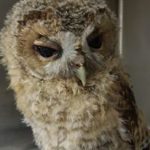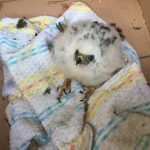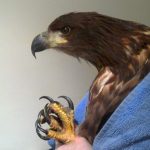 |
 |
 |
Birds of Prey |
||
Frequently Seen Species
Click on any of the below named species to view a photo for identification.
Remember! Some species may look slightly different if they are juveniles or in their first year plumage.
Remember! Some species may look slightly different if they are juveniles or in their first year plumage.
Key Considerations
- Wear strong golves for handling due to sharp talons
- Birds will likely attack using their feet otherthan their beaks
- Cover cages and kennels with towels and house in seperate recovery area if possible to reduce stress
- Ensure as with all casualties that the finder’s details and location found are recorded so bird can be returned
Common Incidents
- Window Strikes – common in raptor species, particularly Sparrowhawks. Birds may be presented with little to no visible signs of trauma but may well be concussed, evidenced by showing little to no response to human interaction. Very common to have sustained injuries to the eyes, requiring further detailed examination and assessment.
- RTCs – most common in Owl species due to low-flying habits making them more susceptible to collisions with vehicles. Birds may be presented with similar injuries to that of window strike birds, but found by the roadside. Birds found by the roadside may not be recent trauma victims and injuries may be several hours to several days old. The majority of these cases will have skeletal damage requiring further investigation
First Aid Requirements
- As with other avian species, those presented in generally poor condition can be assumed to be at least 5% dehydrated. This is especially true in birds that have been grounded for some time and have sustained injuries preventing flight – a bird of prey that cannot fly will quikcly starve and become emaciated. In these cases, we always begin first aid by giving fluids via tube using Critical Care Formula or similar product. This addresses the bird’s dehydration while also working to kickstart the bird’s digestive system before beginning further liquid nutrition later and/or whole foods.
Short-term Housing
- House in quiet room away from other patients if possible to reduce stress
- Housing in a darkened, warm kennel may help in treating birds affected by head trauma/concussion
- Provide a log or similar perch in the recovery kennel so the bird can perch normally as per normal behaviour
- Avoid handling too frequently, only to examine further, provide treatment and force feeding
For further advice or to arrange a referral, please call 0330 229 17 10, selecting option 1. Photos and Videos can be sent via Whatsapp using 07910 643 122 or by email to info@b-w-r.org.uk
